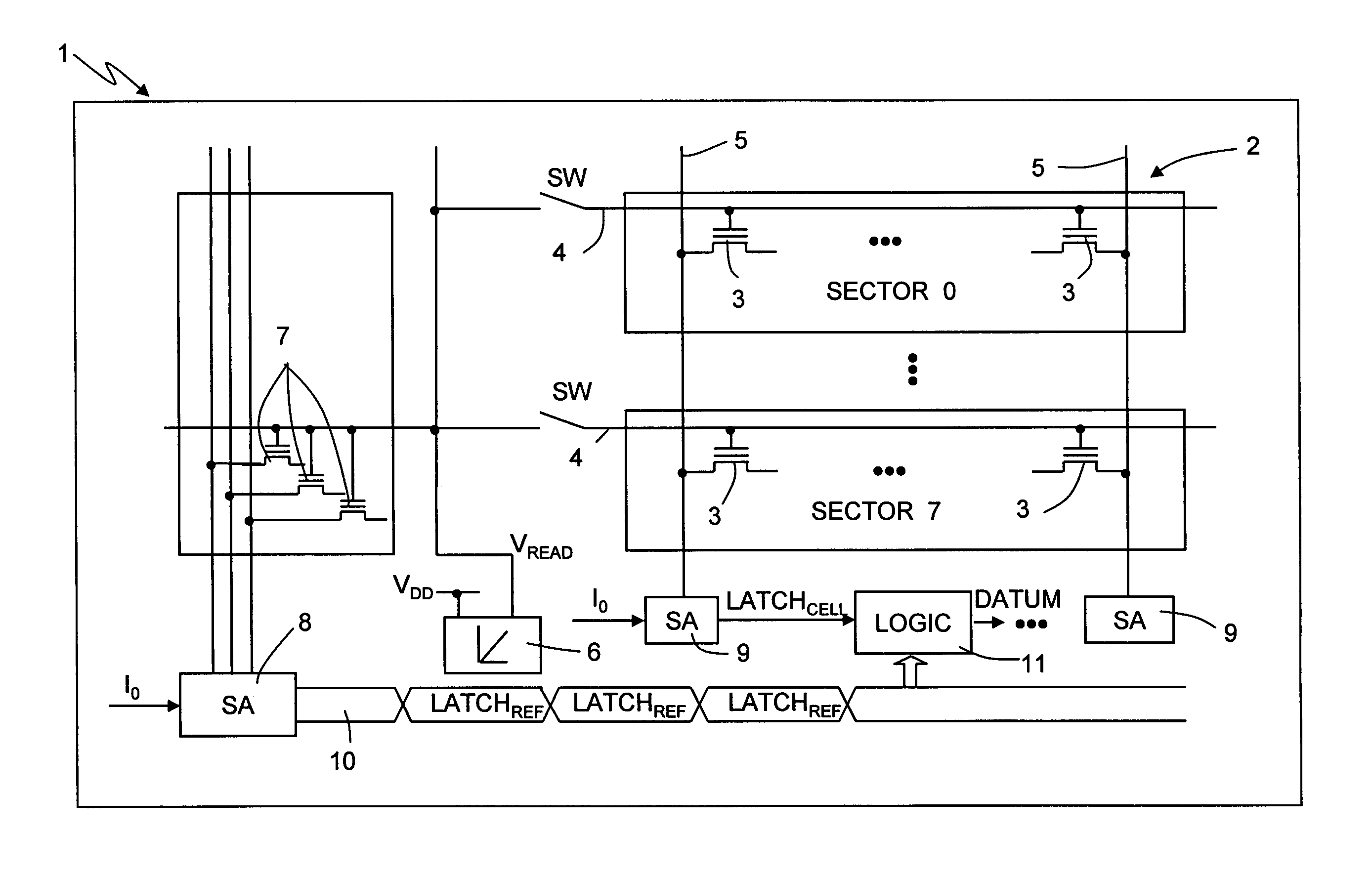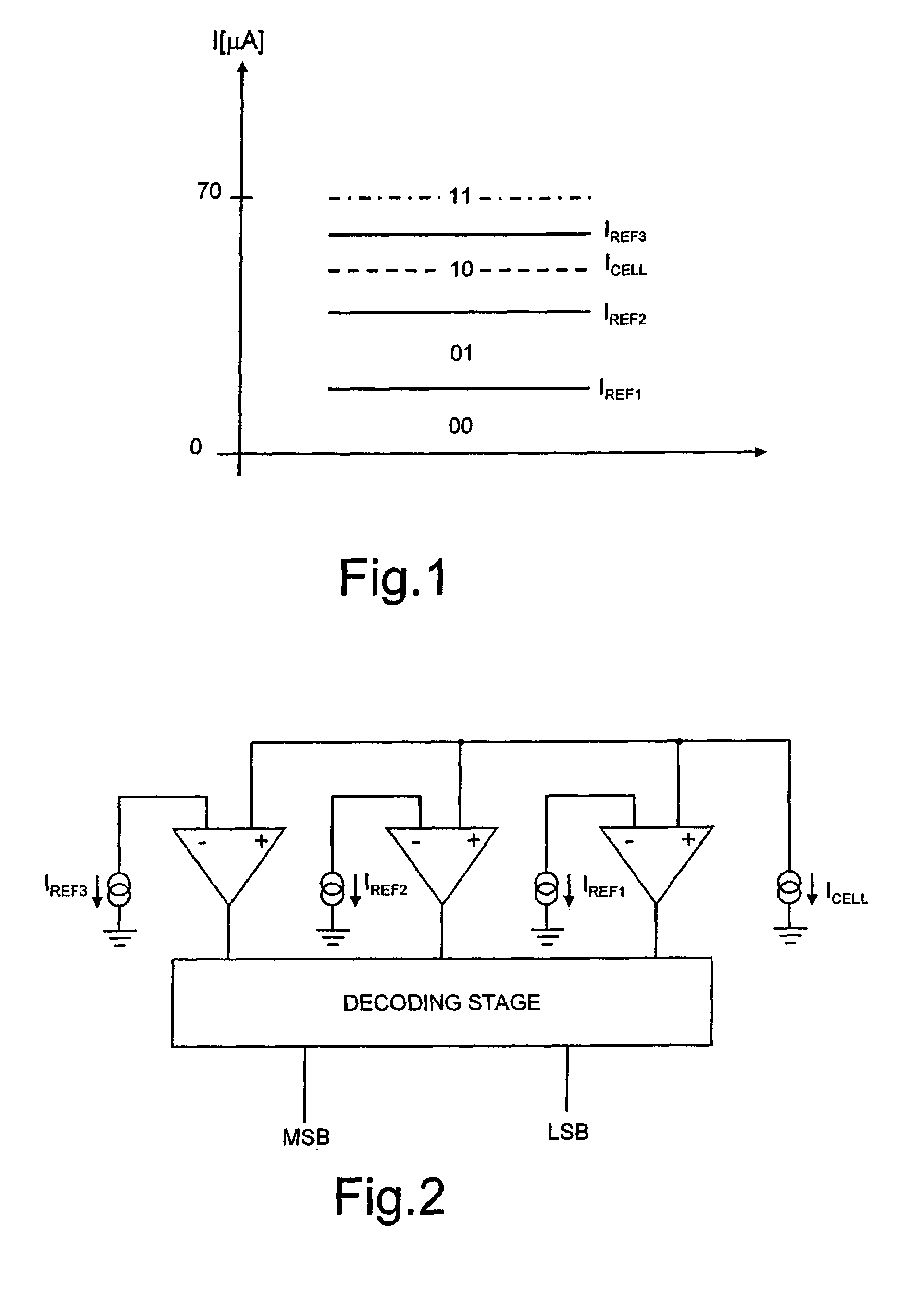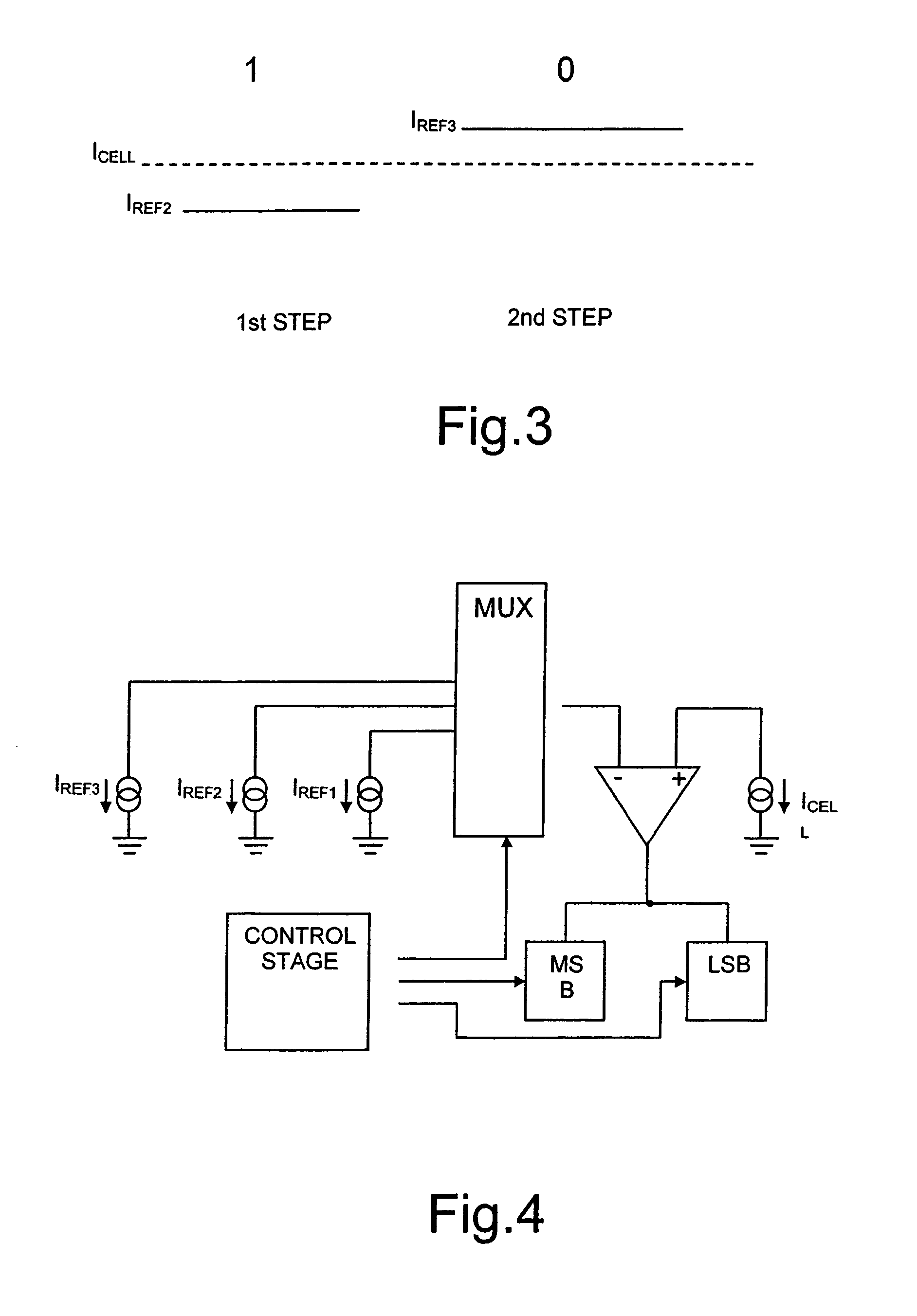Method for reading a nonvolatile memory device and nonvolatile memory device implementing the reading method
a nonvolatile memory and reading method technology, applied in the direction of digital storage, static storage, instruments, etc., can solve the problems of disadvantageous use of this type of sense amplifier, both sense amplifiers of parallel type and sense amplifiers of synchronous-serial-dichotomic type are very bulky
- Summary
- Abstract
- Description
- Claims
- Application Information
AI Technical Summary
Benefits of technology
Problems solved by technology
Method used
Image
Examples
Embodiment Construction
[0084]Only in order to facilitate understanding, the present invention will be described hereinafter with reference to the reading the contents of multilevel memory cells which store two bits, i.e., memory cells in which the threshold voltage can assume four distinct levels, where, as described previously, the current of the array memory cell ICELL that it is intended to read is compared with three different reference currents IREF1, IREF2, IREF3, which are generated by three distinct reference memory cells having three distinct threshold voltages.
[0085]Each time it will be indicated how what is described with regard to the specific example can be applied to memory cells to be read which store n bits, i.e., memory cells in which the threshold voltage can assume 2n distinct values.
[0086]One innovative idea that underlies the present invention is that of:[0087]biasing the array memory cell and the three reference memory cells so as to modify their respective current-conduction states ...
PUM
 Login to View More
Login to View More Abstract
Description
Claims
Application Information
 Login to View More
Login to View More - R&D
- Intellectual Property
- Life Sciences
- Materials
- Tech Scout
- Unparalleled Data Quality
- Higher Quality Content
- 60% Fewer Hallucinations
Browse by: Latest US Patents, China's latest patents, Technical Efficacy Thesaurus, Application Domain, Technology Topic, Popular Technical Reports.
© 2025 PatSnap. All rights reserved.Legal|Privacy policy|Modern Slavery Act Transparency Statement|Sitemap|About US| Contact US: help@patsnap.com



